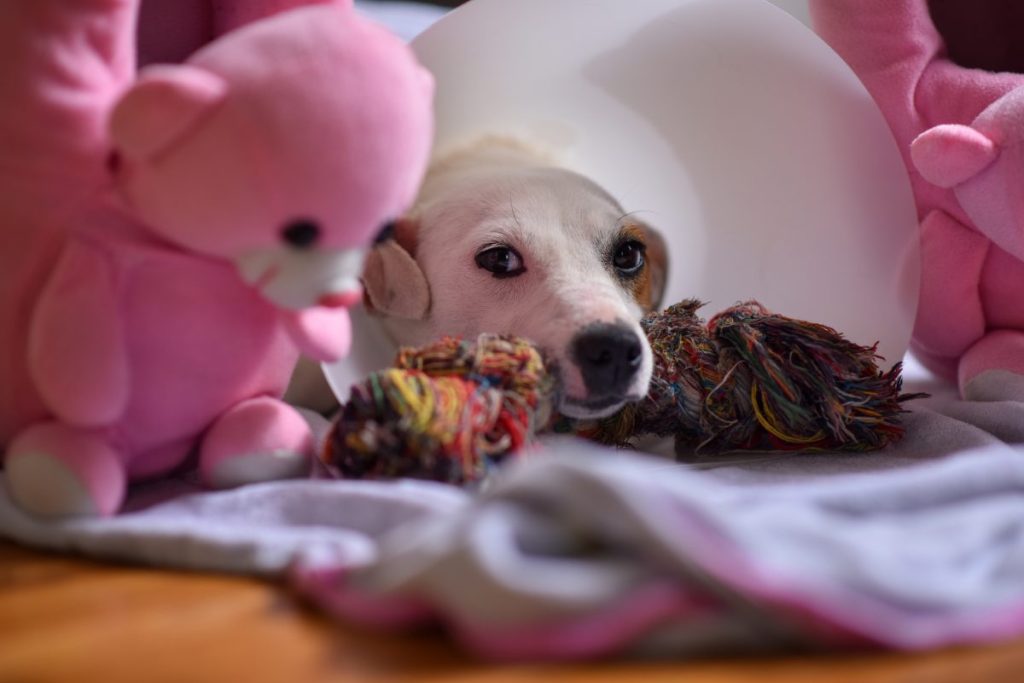These days, most pet parents consider spaying and neutering to be the norm for dogs. That’s a good thing. Thanks to education and advancements in spaying and neutering procedures, along with help from the No Kill Movement, the rate of dogs euthanized in shelters due to overpopulation fell by 90 percent over the last 50 years or so.
That said, shelters still euthanize hundreds of thousands of dogs each year in the United States due to overpopulation. Every dog lover should be concerned about that sad fact, and the best way to help those dogs is often to spay or neuter your own pet. No puppies means less overpopulation, fewer crowded shelters, and decreased euthanasia rates.
That notwithstanding, the benefits of spaying and neutering don’t just extend to other dogs. Your own dog will benefit from the procedure, too. Spaying and neutering prevent several potentially deadly diseases, unwanted behaviors, and conflicts between dogs. Here are a few things you should know about spaying and neutering.
Why spaying/neutering is important for your dog
The main benefit from the spaying or neutering procedure is, of course, that your dog won’t produce any puppies and contribute to the pet overpopulation problem. However, there are also plenty of reasons these procedures are important for your own dog, too.
Here are a few ways spaying and neutering help dogs:
- Spaying reduces cancer risks: If a female dog is spayed before her first heat, she has almost no chance of getting mammary gland cancer. After the first heat, the chance is only seven percent and 25 percent after the second heat. Past that — even far, far past — spaying will still reduce risk. What’s more, it completely eliminates the risk of ovarian or uterine cancer.
- Spaying prevents dangerous infections: Spaying prevents pyometra, a common, life-threatening infection of the uterus. Typically, middle-aged or older females get it about six weeks after a heat cycle. The treatment is an emergency spay.
- Neutering prevents major health issues: Neutering prevents some cancers of the testicle and anus, and it helps prevent some significant prostate problems in males.
- Neutering reduces behavioral issues: Males are usually less aggressive after neutering. Without that testosterone jamming up their brains, they’re less likely to roam. In turn, they don’t act like such escape-artist Houdini Hounds in order to get out. Perhaps best of all, they’re less likely to mark and hump or mount. You might still see some of this behavior, mind you, just less of it.
What spaying won’t do is send your female dog into menopause — another myth. Dogs don’t go into menopause, ever.
When it’s time to spay or neuter your dog

Puppies can usually be spayed or neutered any time after eight weeks of age. However, many people wait until just before or immediately after the dog becomes sexually mature — sometime around six to nine months of age, depending on the breed.
Females gain additional health benefits if they’re spayed before their first heat cycle. You should talk to your veterinarian about the appropriate time to perform the procedure for your individual dog.
Adult or older dogs have a slightly higher risk for complications from the surgery, as do overweight or unhealthy dogs. Your vet can help reduce these risks and provide you with information for post-surgery care that will help your dog recover. The benefits of the procedure often outweigh these risks, so consult your veterinarian.
Considerations for scheduling the procedure
Here are some things to consider when scheduling the surgery:
- Your dog’s overall health: Hormones affect body structure. Dogs actually tend to grow larger if they’re neutered before they reach puberty. Sometimes this can even lead to irregular bone growth, and that is a risk you should discuss with your vet.
- Your dog’s personality: Your dog’s personality will likely be the same, functionally, whether you have the procedure done early or later.
- Your dog’s health risks and specific medical conditions: Surgery is safer when the dog is young, although smaller patients have a higher risk of problems with hypothermia and hypoglycemia when anesthetized. Your vet will be able to monitor for these complications and provide treatment.
- Your dog’s immune system: Younger patients have immature immune systems, which can be a concern if post-surgery infections or other problems develop. Follow your vet’s instructions for at-home care closely, and talk to them if you see concerning symptoms.
- Your dog’s inability to fight the urge: Don’t put it off and assume you can just isolate your dog from any romantic encounters. Mistakes — like open doors, broken fences, and unsecured yards — happen, and there are already too many unwanted pets in the world.
Spaying or neutering your dog has many benefits, both for your pooch and the larger pet community. To learn more, read how to distinguish myths about spaying/neutering from the facts. After that, be sure to check out our piece on dog health basics to ensure your pooch has everything they need to live a long, healthy life by your side.









